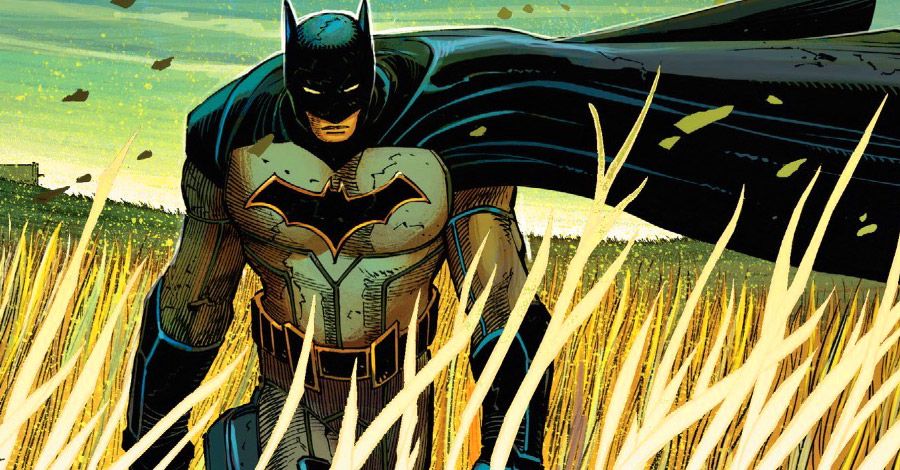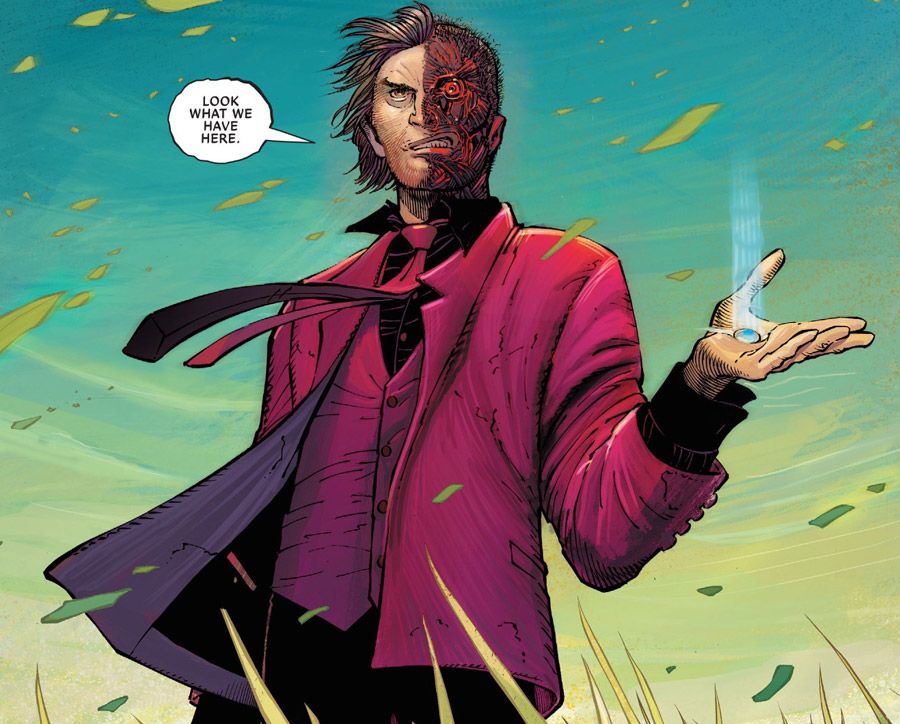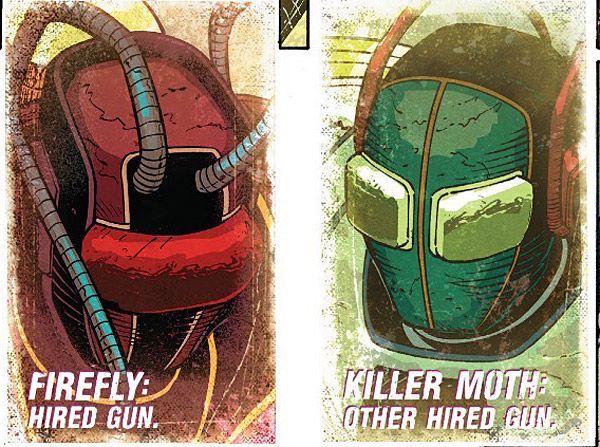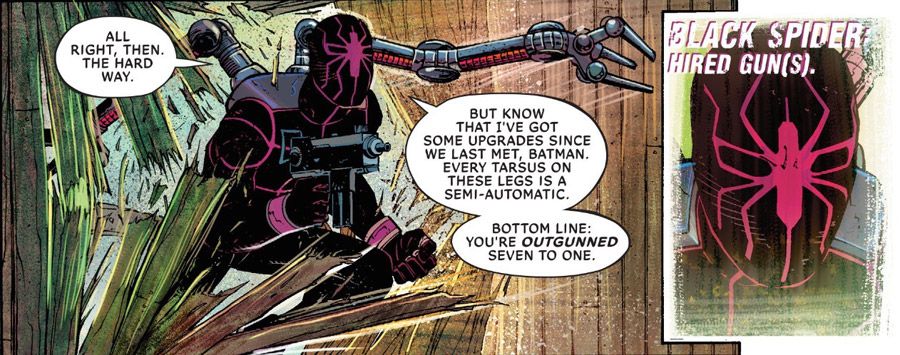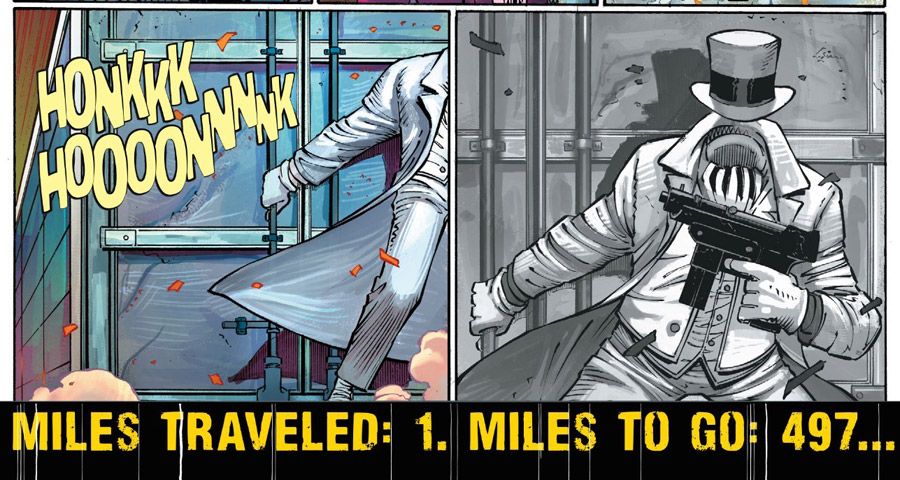"All-Star Batman" #1 is half race, half showcase of Batman's rogues gallery. Scott Snyder, John Romita Jr., and Danny Miki kick off the series with a basic premise where Batman has every villain in his portfolio -- and a few others to boot -- gunning for him as he tries to bring Two-Face in for justice. But while Two-Face is an iconic bad guy, familiar to millions, some of the issue's others evil-doers may have readers hoping for a quick refresher.
The Mirror Has Two Faces
The most familiar villain in "All-Star Batman" #1 is, of course, Two-Face. He's appeared in two different movies ("Batman Forever" and "The Dark Knight"), and has been one of Batman's more persistent foes since his debut in 1942. His basic shtick has remained the same: When half of his face is scarred, the former District Attorney goes insane, focusing on coin flips to make decisions. In current DC Comics continuity, while some of the details of Dent's transformation into Two-Face have changed, he's remained the insane this-or-that villain readers love to hate.
Here, though, Snyder's introduces the idea that Two-Face is also an information broker. Presumably building up his information file both as Two-Face as well as (prior to his transformation) Harvey Dent, the villain now has a wealth of information that he's prepared to release to the world if no one stops Batman from bringing him in to justice. It's a curious change to the character, but one that efficiently and believably sparks an immediate way of introducing new villains to the mix. Two-Face's call is drawing the bad guys out, both big names and small, and it's the smaller ones who are the first to arrive.
Creepy Insects (and an Arachnid Too)
Killer Moth, Firefly and Black Spider are certainly characters that don't pop into the casual fan's minds quite as quickly as Two-Face. Of the three, readers might be the most familiar with Killer Moth, if only because the character is often a point of ridicule. While his initial appearance in the 1950s had him creating a "Mothcave" in an attempt to be the anti-Batman (it doesn't go well, needless to say), his most notable appearance for some time was being the first villain Batgirl faced upon her debut. DC's "Underworld Unleashed" event in 1995 attempted to up Killer Moth's profile by having the demonic Neron transform him into a monstrous moth rather than just a guy who dresses up like one, with a name change to Charaxes. (Killer Moth apparently failed high school biology, since Charaxes is the genus of a group of butterflies, not moths.)
Readers and creators alike clearly took this new version of the character about as seriously as you can imagine, culminating in Charaxes managing to die two separate occasions ("Infinite Crisis" and "Blackest Night"). The pre-"Flashpoint" timeline had a few more Killer Moths since then, begging the question why anyone thought the character needed to come back. In the New 52, he showed up during a "Zero Year" team-up between Batman and Green Arrow. This version seems much less moth-like than his predecessors, looking more like Marvel Comics' Beetle, complete with an armored suit that happens to have antennae and wings.
Firefly (no relation to the Joss Whedon show) was originally two entirely different characters, both of whom debuted in the '50s, and both surprisingly generic in their approach to villainy. It was the post-"Crisis" version of the character that introduced the idea that this was a villain who was also a pyromaniac. He actually became Killer Moth's protege for a brief period of time, until just how deranged this incarnation of Firefly was came to light and Killer Moth quickly distanced himself from the firebug. Over the years, Firefly tried to burn down specific landmarks, as well as all of Gotham City. Since the DC Universe reset at the end of "Flashpoint," we've seen a new Firefly introduced. This one, Ted Carson, appeared in "Nightwing Annual" #1 as someone who was obsessed with burning down everything connected to his ex-girlfriend. With such a very specific plan at the core of Carson's motivation, this Firefly may turn out to be a new character who merely bears the same name.
Black Spider is a much more recent creation compared to the other two bugs coming after Batman. Debuting in the 1970s as a vigilante who kills drug dealers, his methods immediately put him into conflict with Batman, and at times the two sparred even as Black Spider felt he was doing the right thing. In the New 52, Black Spider was introduced as one of the initial members of the Suicide Squad. For a time, he was a rare "good" member of the Squad, who felt he was only there because of his deadly methods of dealing with criminals. Ultimately, though, Black Spider was revealed as a member of the Squad's initial foes, Basilisk, and was subsequently defeated by none other than Amanda Waller and her grandmother. He's not been seen since, but clearly his incarceration has come to an end.
Batman Ain't Afraid Of No Ghosts
Finally, "All-Star Batman" #1 gives us a glimpse of the Gentleman Ghost, another character whose origins trace back to the 1940s. There, he was a literal ghost trapped in Limbo, forever trying to take revenge on everyone from Batman to Hawkman to the entire JSA. Post-"Flashpoint," he was no longer a ghost but a thief who stole an orb that could resurrect the dead. Hawkman ultimately defeated him, trapping the Gentleman Ghost in another dimension. He showed up once since then in "Gotham By Midnight Annual" #1, by which point he how appeared to have four spider-legs extending from his torso. The Spectre seemingly destroyed the Gentleman Ghost at the end of the issue, though, which once again begs the question of whether this ghostly version of the character is the same one we've seen up until now, or if there's a new Ghost in town.
With so many villains over the years at Snyder's disposal, "All-Star Batman" promises to drag them all out into the open thanks to Two-Face's offer. And with Duke Thomas and Alfred Pennyworth getting drawn into the mix, there's a lot more going on than just a few zillion villains jumping onto the page. Hang on -- it's going to be a bumpy ride ahead as Batman and Two-Face make their way back to Gotham City. Only 497 more miles to go!

